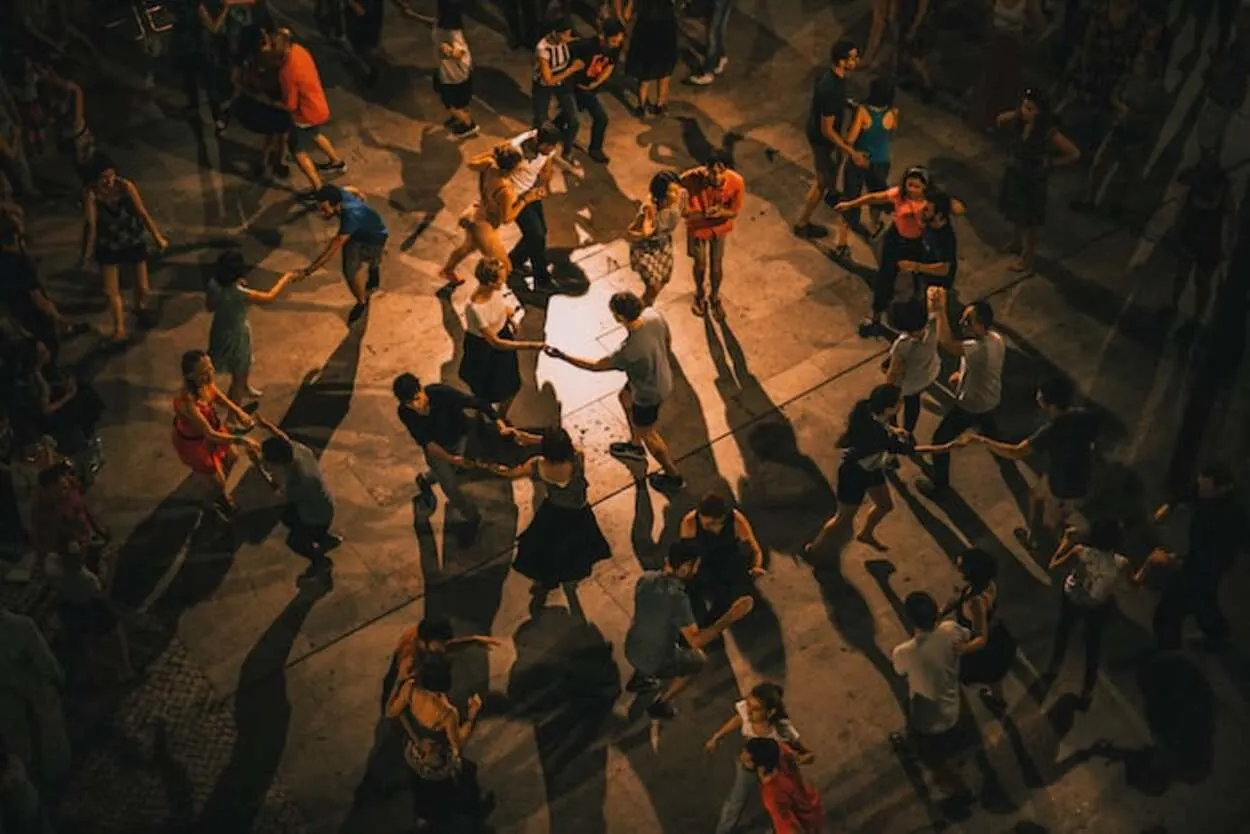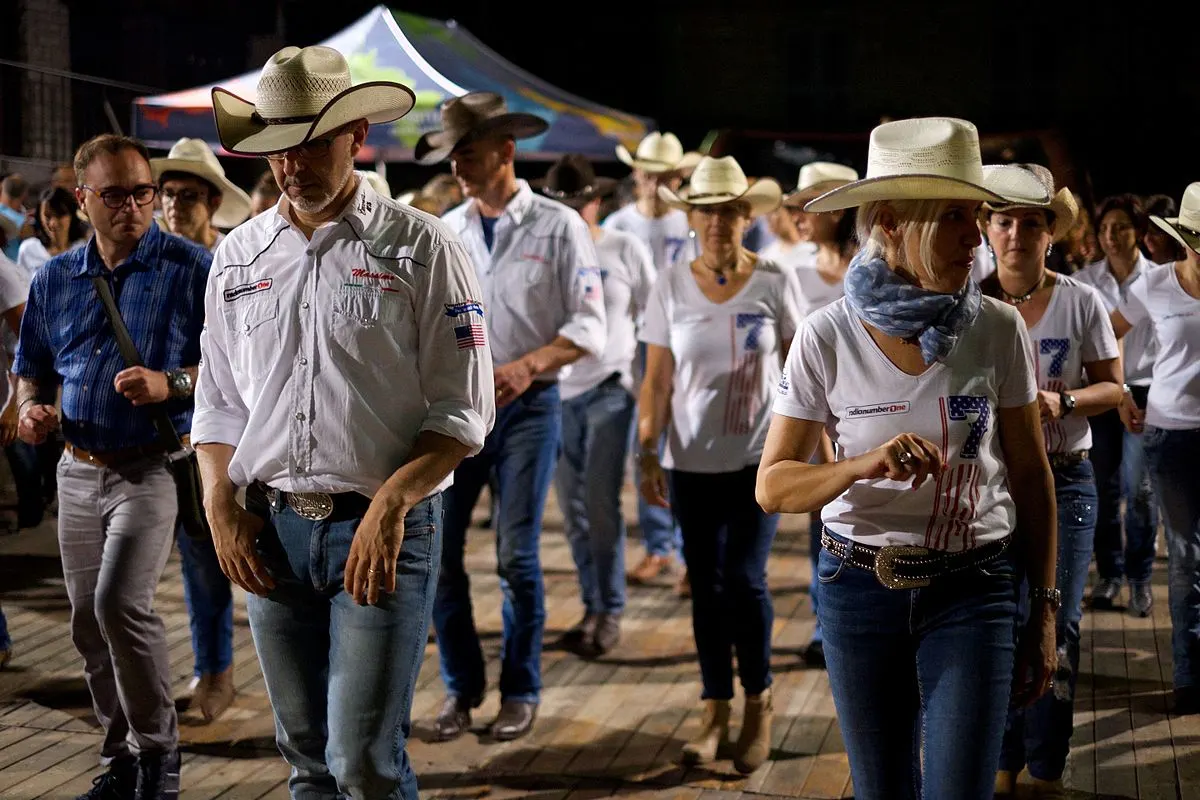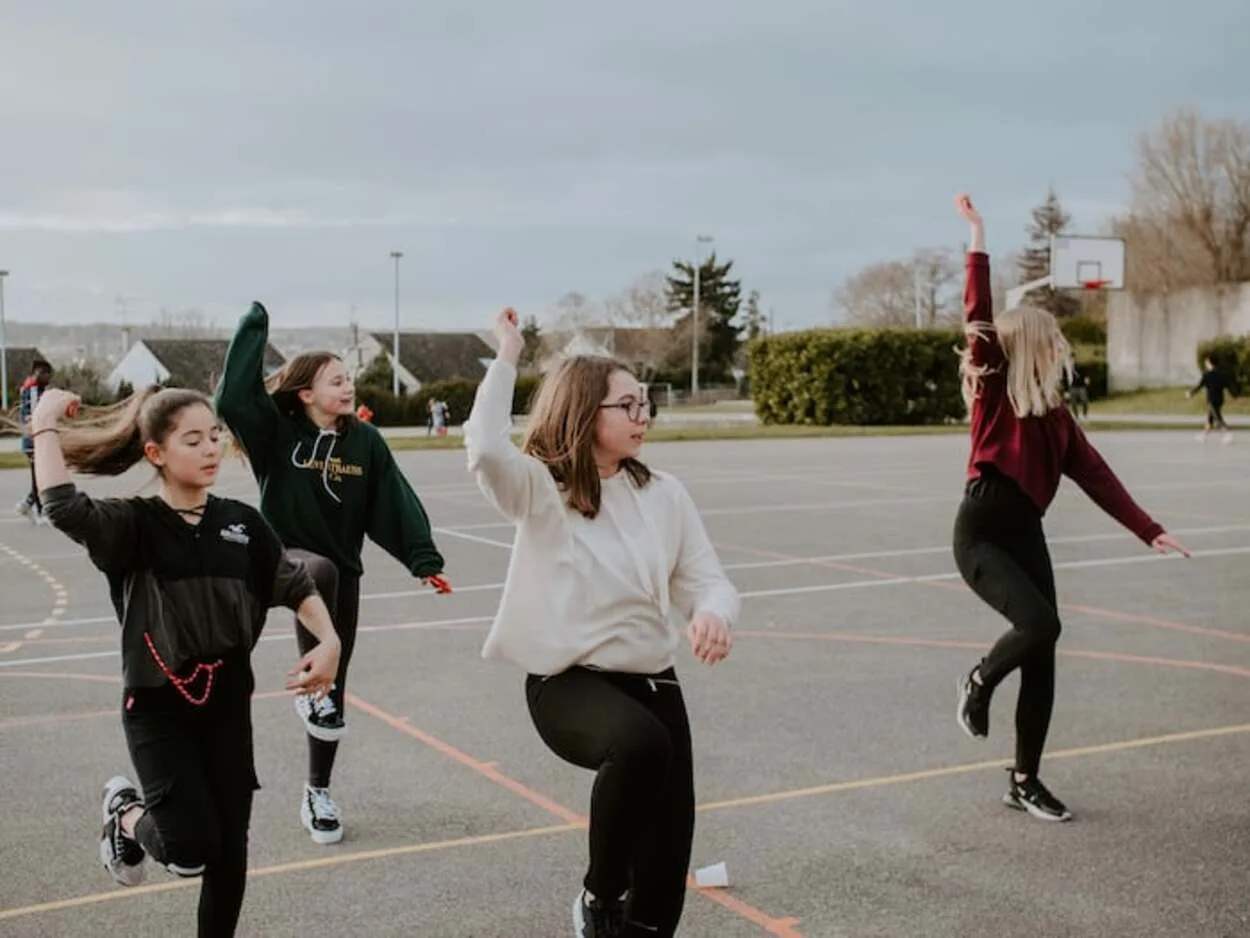Country line dancing is a popular form of dance that originated in the United States in the 1970s. It is a social dance that is typically performed in groups, with dancers standing in lines facing each other.
The dance is characterized by a series of steps and movements that are performed in unison, with the dancers moving in sync to the beat of the music.
One of the key features of country line dancing is its simplicity. Unlike other forms of dance that require a high level of skill and technique, country line dancing is accessible to people of all ages and skill levels.
The basic steps are easy to learn and can be adapted to a wide range of different music styles, from traditional country to modern pop.
Over the years, country line dancing has become a cultural phenomenon, with millions of people around the world participating in classes, workshops, and social events. It has also inspired a number of popular songs and music videos, helping to spread the popularity of the dance even further.
Whether you are a seasoned dancer or a complete beginner, country line dancing is a fun and engaging way to get active and enjoy music with others.
The following table contains some general information about line dancing:
| Aspect | Information |
|---|---|
| Origin | Evolved from traditional folk and country dances |
| Popularization | 1980s, especially with country music |
| Steps and Patterns | Involves synchronized steps and movements |
| Music | Traditionally associated with country music |
| Social | Often danced in groups, fostering community |
| Global Appeal | Gained popularity internationally |
| Iconic Dances | “Electric Slide,” “Boot Scootin’ Boogie” |
| Instruction | Choreographed routines, easy to learn |
| Evolution | Continues to evolve with new trends |
| Health Benefits | Provides exercise and improves coordination |
History of Country Line Dances

Country line dances have their roots in traditional folk dances from Europe. These dances were brought over by immigrants who settled in the United States during the 1800s.
As the country began to develop its own unique culture, these dances evolved and became a staple of the American West.
The first known country line dance was the “Texas Two-Step,” which was popularized in the 1930s. This dance was a precursor to modern country line dances, and featured a simple two-step pattern that was easy to learn and perform.
In the 1970s and 1980s, country music experienced a surge in popularity, which led to the development of new line dances. These dances were often choreographed to specific songs, and became a popular way for fans to interact with their favorite artists.
Today, country line dancing continues to evolve and grow in popularity. There are countless variations of the dance, each with its own unique steps and style.
From the classic “Boot Scootin’ Boogie” to the more modern “Cupid Shuffle,” country line dancing is a beloved pastime for people of all ages and backgrounds.

Popular Country Line Dances
Achy Breaky Heart
One of the most popular country line dances is the Achy Breaky Heart.
The dance is set to the song “Achy Breaky Heart” by Billy Ray Cyrus, which was released in 1992. The dance is easy to learn and has become a staple at many country dance clubs.
The Achy Breaky Heart dance consists of a series of steps that are repeated throughout the song. The dance starts with a grapevine step, followed by a shuffle step, and then a turn.
The steps are repeated several times, with variations added in between.
Tush Push
Another popular country line dance is the Tush Push.
The dance is set to the song “Tush” by ZZ Top, and was created in the early 1990s. The Tush Push is a lively dance that involves a lot of footwork and hip movements.
The Tush Push dance consists of a series of steps that are repeated throughout the song. The dance starts with a grapevine step, followed by a shuffle step, and then a turn.
The steps are repeated several times, with variations added in between.
Electric Slide
The Electric Slide is a classic country line dance that has been around for decades. The dance is set to the song “Electric Boogie” by Marcia Griffiths, and has become a staple at many country dance clubs.
The Electric Slide dance consists of a series of steps that are repeated throughout the song. The dance starts with a grapevine step, followed by a shuffle step, and then a turn.
The steps are repeated several times, with variations added in between. The dance is easy to learn and has become a favorite among both beginners and experienced dancers.
Steps and Techniques

Basic Steps
Country line dancing typically involves a series of basic steps that are used in many different dances. These steps include the grapevine, the shuffle, and the pivot turn.
The grapevine involves stepping to the side, crossing one foot behind the other, stepping to the side again, and then bringing the other foot up to meet the first. The shuffle involves taking three steps to the side, with a slight hop on the third step.
The pivot turn involves stepping forward on one foot, pivoting on that foot, and then stepping back with the other foot.
Turns and Spins
Many country line dances also include turns and spins. These can be simple turns, such as the half turn or the full turn, or more complex turns, such as the sailor step or the coaster step.
Spins can be done in place or while moving across the dance floor. It is important to maintain proper balance and posture when turning or spinning to avoid injury.
Footwork Patterns
In addition to basic steps and turns, country line dancing also involves a variety of footwork patterns.
These patterns can include syncopated steps, where the rhythm of the steps is intentionally off-beat, and heel and toe taps, where the dancer taps their heel or toe to the floor while maintaining their balance.
It is important to practice these footwork patterns slowly at first, gradually increasing speed as the dancer becomes more comfortable with the steps.
Overall, country line dancing is a fun and energetic form of dance that requires practice and dedication to master. By mastering the basic steps, turns, and footwork patterns, dancers can enjoy the full range of country line dances and impress their friends and family on the dance floor.
Watch the following video to learn more about line dance:

Country Line Dance Etiquette
Country line dancing is a fun and social activity that can be enjoyed by people of all ages. However, it’s important to follow proper etiquette to ensure that everyone has a good time and stays safe on the dance floor.
Here are a few guidelines to keep in mind:
- Respect the dance floor: The dance floor is a shared space, so be mindful of others around you. Avoid standing or sitting on the dance floor, and don’t bring drinks or food onto the floor.
- Follow the line of dance: In most line dances, dancers move in a counterclockwise direction around the dance floor. Be sure to stay in line and avoid cutting across the middle of the floor.
- Be aware of your surroundings: Keep an eye out for other dancers, especially beginners who may not be as confident on the dance floor. Avoid bumping into others or stepping on their feet.
- Dress appropriately: Wear comfortable clothing and shoes that allow you to move freely on the dance floor. Avoid wearing anything that could be dangerous, such as high heels or loose clothing that could get caught by other dancers.
- Follow the instructions of the dance leader: During group dances, there is usually a designated dance leader who will guide the steps. Pay attention to their instructions and follow along to avoid confusion on the dance floor.
By following these simple guidelines, dancers can ensure that everyone has a great time and stays safe while enjoying the fun and energetic world of country line dancing.
Conclusion
- Country line dancing originated in the United States in the 1970s as a social dance performed in groups, characterized by simple steps and movements.
- Its accessibility has made it popular worldwide, appealing to people of all ages and skill levels.
- Rooted in traditional folk dances from Europe, country line dancing evolved with the surge in popularity of country music in the 1970s and 1980s.
- The dance continues to evolve with countless variations, and some popular line dances include Achy Breaky Heart, Tush Push, and Electric Slide.
- Basic steps like the grapevine, shuffle, and pivot turn, along with turns, spins, and footwork patterns, form the foundation of country line dancing.
- Following proper etiquette, such as respecting the dance floor, moving in the designated direction, being aware of others, and dressing appropriately, enhances the overall experience of country line dancing.
- Country line dancing is a fun and energetic activity that brings people together, creating a cultural phenomenon with a rich history and ongoing popularity.
